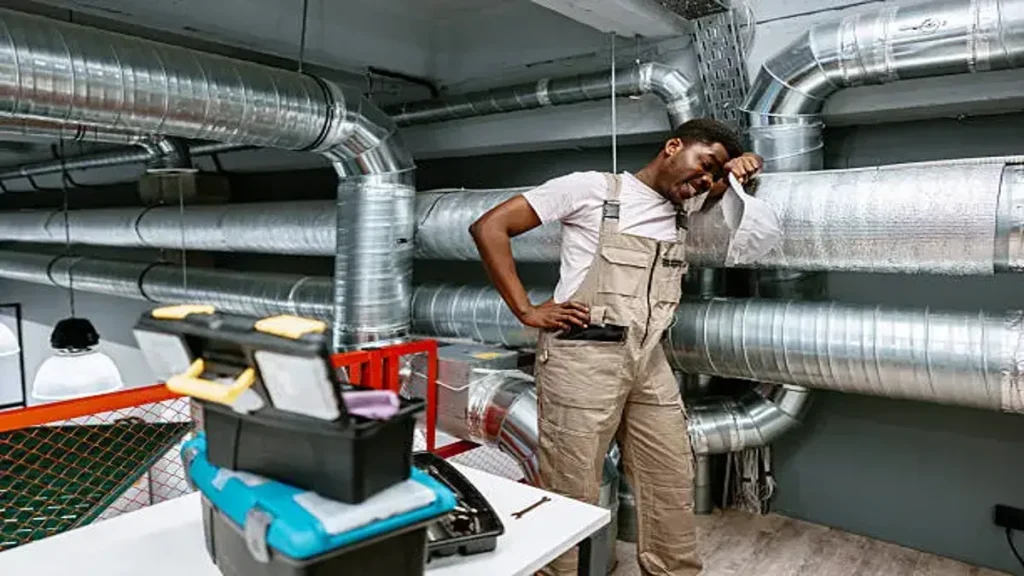Indoor air quality plays a critical role in maintaining comfort, health, and the longevity of a building. Humidity levels, in particular, can have a significant impact on both human well-being and the structural integrity of a home or commercial space. Too much moisture in the air can lead to mold growth, condensation on walls and windows, and discomfort for occupants. On the other hand, excessively dry air can cause respiratory issues, dry skin, and static electricity buildup. HVAC contractors are tasked with managing these indoor humidity levels effectively to ensure a balanced environment. We will explore the strategies and techniques they use to control moisture, maintain comfort, and optimize the performance of heating and cooling systems. Understanding these methods offers insight into the importance of precise humidity management.
Techniques HVAC Contractors Use to Control Humidity
- Assessment and Measurement of Indoor Conditions
HVAC contractors begin by evaluating the existing indoor environment to determine current humidity levels. Using tools such as hygrometers and moisture meters, they measure relative humidity to understand the air’s moisture content. This initial assessment helps identify areas with excessive dampness or dryness. HVAC Contractors in Muscle Shoals, AL also consider external factors such as local climate, seasonal changes, and the building’s ventilation system, as these can significantly influence indoor humidity. By understanding the specific conditions of a space, contractors can develop a tailored approach to managing moisture. This process ensures that solutions are not applied uniformly but are designed to address the unique needs of each property, preventing long-term issues related to improper humidity control.
- Integration of Humidifiers and Dehumidifiers
One of the primary methods for controlling indoor humidity involves the use of humidifiers and dehumidifiers integrated into HVAC systems. Humidifiers add moisture to dry air, which is particularly important during winter months when heating systems can excessively dry out indoor spaces. Conversely, dehumidifiers remove excess moisture from the air, reducing the risk of mold, condensation, and discomfort caused by damp conditions. HVAC contractors strategically place these devices or connect them to central systems to ensure consistent humidity control throughout the building. Proper sizing and calibration are critical, as an overpowered unit can create new problems, while an undersized system may fail to maintain balance. The careful selection and installation of these devices reflect a proactive approach to indoor air management.
- Optimization of Ventilation Systems
Effective ventilation is another key factor in managing indoor humidity levels. HVAC contractors examine the airflow within a building to ensure that air circulates efficiently and moisture does not accumulate in confined areas. Ventilation helps remove stale, humid air and replace it with fresh, conditioned air from outside. In commercial buildings, contractors often employ energy recovery ventilators or heat recovery ventilators, which exchange air while maintaining energy efficiency. For residential spaces, ductwork design and fan operation are evaluated to promote balanced airflow. By optimizing ventilation, contractors prevent localized humidity issues, reduce the likelihood of mold growth, and maintain an even distribution of temperature and moisture throughout the property.
- Temperature Control and Its Impact on Humidity
Temperature directly influences the relative humidity of indoor air. HVAC contractors carefully regulate heating and cooling systems to maintain a balance between temperature and moisture levels. Warmer air can hold more moisture, while cooler air tends to be drier. By adjusting system operation, contractors can indirectly control indoor humidity. For example, during hot, humid months, air conditioning units not only lower temperature but also remove moisture from the air through condensation. In colder months, heating systems can dry indoor spaces, prompting the need for supplemental humidification. Contractors monitor and calibrate thermostats and system components to maintain an environment that supports both comfort and structural preservation, ensuring that temperature control complements humidity management.
- Use of Advanced Monitoring and Control Technology
Modern HVAC systems often include advanced monitoring and control technologies that allow contractors to manage indoor humidity with precision. Sensors placed throughout a building continuously measure temperature and moisture levels, transmitting data to central control units. This real-time information allows contractors or automated systems to adjust HVAC operation as needed. Some systems even connect to smart home platforms, enabling property owners to monitor and control humidity remotely. By leveraging technology, contractors can respond to changes quickly, prevent moisture-related problems before they escalate, and maintain a consistent indoor environment. This proactive approach ensures that humidity remains within an optimal range without requiring constant manual adjustment.
- Ductwork Maintenance and Sealing
Properly maintained and sealed ductwork is essential for effective humidity control. Leaks in duct systems can allow conditioned air to escape, disrupting the balance of temperature and moisture. HVAC contractors inspect ducts for gaps, cracks, and loose connections, sealing them to prevent the infiltration of outside air and the loss of treated air. This process ensures that the air reaching each room maintains the intended humidity level. Additionally, clean ducts reduces the accumulation of dust and moisture, which can contribute to uneven humidity distribution and potential mold growth. By addressing ductwork issues, contractors enhance the overall efficiency of HVAC systems while improving indoor air quality and comfort.
Managing indoor humidity is a complex but essential aspect of maintaining comfortable and healthy living or working environments. Through careful assessment, integration of humidifiers and dehumidifiers, optimized ventilation, temperature control, advanced monitoring, ductwork maintenance, and routine adjustments, HVAC contractors ensure that moisture levels remain within an ideal range. These strategies not only enhance comfort but also prevent structural damage and improve air quality. Understanding the methods contractors use highlights the importance of a comprehensive approach to humidity management. By addressing both immediate needs and long-term considerations, HVAC professionals create indoor spaces that are safe, balanced, and consistently comfortable for all occupants.

